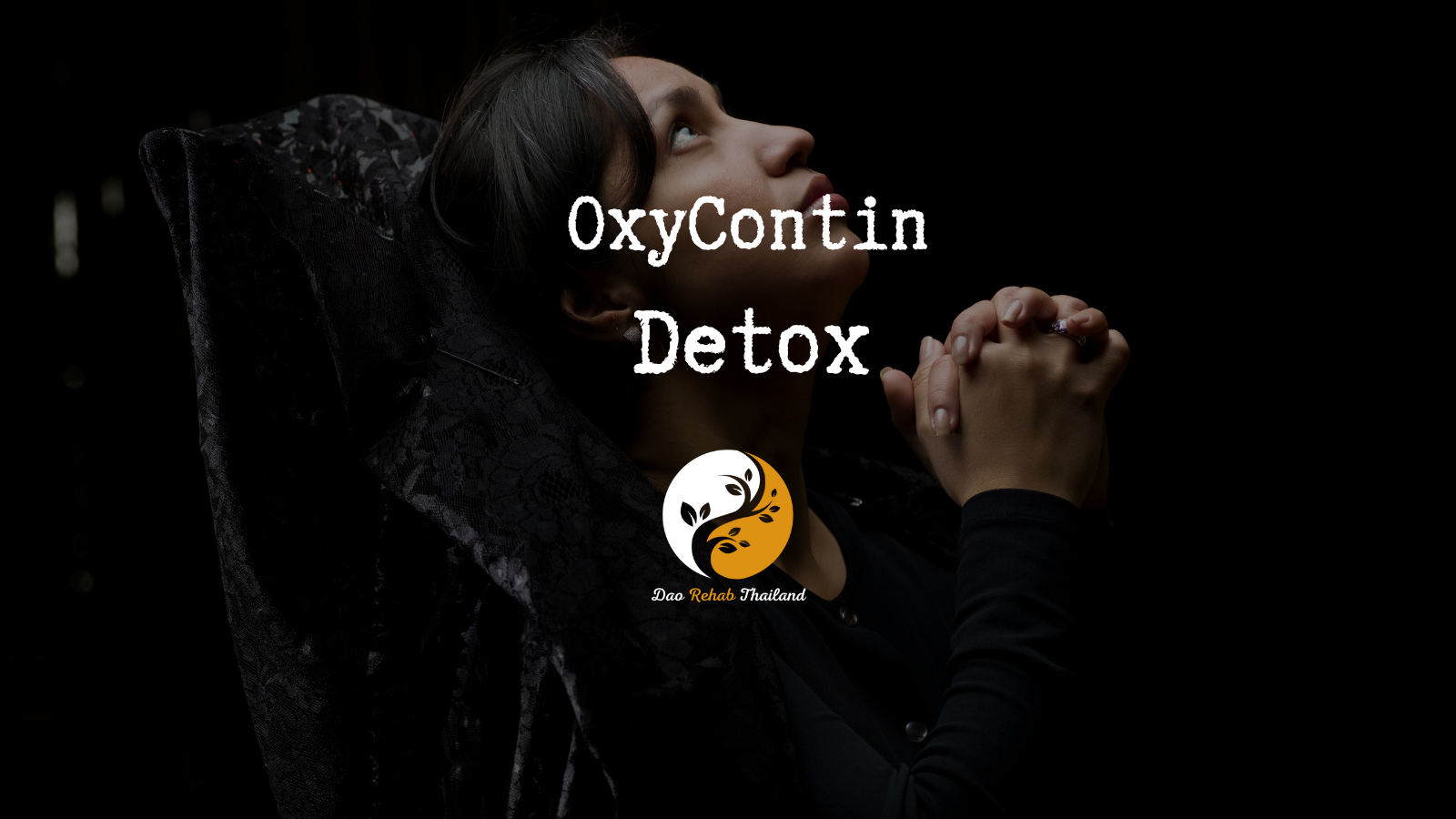
OxyContin Detox in thailand
Withdrawal from OxyContin
“Turning the impossible into possible”

"Detox from OxyContin at a Luxury Holistic Center in Thailand and Israel"

Detox from OxyContin
OxyContin, a brand name for the opioid oxycodone, is a powerful painkiller often prescribed for moderate to severe pain management. Due to its potent effects and potential for dependence, stopping OxyContin use can be challenging and may lead to withdrawal symptoms. Here’s what you need to know about OxyContin withdrawal:
Detoxification from OxyContin in DaoTherapy is conducted in a supportive environment focused on holistic healing. The detox process includes gradual dose reduction, with professional guidance, to prevent severe withdrawal symptoms such as pain, anxiety, and fatigue. Patients participate in treatments such as yoga, meditation, and breathing techniques, which promote relaxation and enhance self-awareness. The DaoTherapy team provides emotional support and tools for coping with challenges, fostering personal and spiritual growth. This approach enables patients to improve their quality of life and achieve significant mental and physical rehabilitation, opening pathways to deep and comprehensive healing after OxyContin addiction.
"Holistic Center for Trauma, Addiction, and Mental Imbalance Treatment in Thailand"
“Come to the beginning of your journey to freedom from addiction to alcohol, drugs, and pills, and rediscover your life within the serene embrace of DaoTherapy Rehab in Thailand—where holistic healing meets empowering recovery.”
DaoTherapy Holistic Rehab
Key Elements of OxyContin Detox:
Medical Supervision: OxyContin detox must be conducted under medical supervision, as the body may experience withdrawal symptoms. These can include nausea, anxiety, muscle aches, and insomnia. A medical team will monitor and manage these symptoms to ensure the patient’s safety and comfort.
Holistic Therapies:
Holistic Therapies: Many detox programs incorporate holistic therapies such as mindfulness, yoga, and meditation to help individuals cope with stress and anxiety during the detox process. These therapies support the mind-body connection and contribute to overall recovery.
Tapering Process
Tapering Process: OxyContin detox often involves a gradual tapering of the drug to reduce withdrawal severity. Doctors will slowly decrease the dosage over time to allow the body to adjust to lower levels of the substance.
Psychological Support:
Psychological Support: Like any addiction recovery process, detox from OxyContin includes psychological support. This can involve counseling, therapy, or support groups to address the mental and emotional aspects of addiction.
Post-Detox Treatment:
Post-Detox Treatment: After completing detox, continuing treatment is crucial to prevent relapse. This often includes participation in ongoing therapy, group support, and the development of new coping strategies to maintain sobriety.
General Background and History of OxyContin:
Development and Introduction:
OxyContin is a brand name for the extended-release form of oxycodone, an opioid analgesic. It was developed by Purdue Pharma and introduced to the pharmaceutical market in 1996. The main purpose of OxyContin was to provide long-lasting pain relief for patients suffering from chronic pain conditions. Unlike immediate-release oxycodone, which requires frequent dosing, OxyContin was designed to release its active ingredient slowly over 12 hours, allowing for less frequent dosing and more consistent pain management.
How It Works:
OxyContin contains oxycodone, which binds to opioid receptors in the brain and central nervous system. This binding helps reduce the perception of pain and can produce feelings of euphoria. The extended-release formulation was intended to manage pain more effectively over longer periods, offering relief to those with severe or persistent pain conditions.
Initial Success:
OxyContin was initially celebrated as a breakthrough in pain management due to its extended-release properties, making it highly attractive for both patients and healthcare providers. It quickly became one of the most widely prescribed painkillers in the United States and other countries.
The Rise of Abuse and the Opioid Crisis:
However, OxyContin soon became associated with widespread misuse and addiction. One major factor contributing to the problem was that individuals discovered ways to bypass the time-release mechanism, such as crushing, snorting, or injecting the pills to achieve an intense, immediate high. This led to a significant surge in opioid addiction and overdose rates.
Marketing and Legal Issues:
Purdue Pharma faced intense scrutiny and legal battles due to their aggressive marketing strategies, which, according to lawsuits and investigations, downplayed the addictive potential of OxyContin. In 2007, Purdue Pharma and some of its top executives were found guilty of misleading the public about the risk of addiction, leading to significant financial penalties.
Reformulation:
In response to the growing opioid crisis and criticism, Purdue Pharma reformulated OxyContin in 2010 to make it more difficult to manipulate for misuse. The new formulation was designed to be more tamper-resistant, meaning that it would become a gel-like substance when crushed, making it harder to snort or inject.
Impact on the Opioid Epidemic:
Despite these changes, the opioid epidemic continued to escalate, fueled not only by prescription opioids like OxyContin but also by the shift to other opioids, such as heroin and fentanyl, as prescription drugs became harder to obtain. OxyContin’s legacy remains a controversial topic, symbolizing both the need for effective pain management and the devastating consequences of opioid over-prescription and misuse.
Current Use and Regulation:
Today, OxyContin is still prescribed but under much stricter regulations and with heightened awareness of its potential for abuse. Healthcare providers are more cautious about prescribing it and emphasize the importance of monitoring patients closely. The medical community now prioritizes a more balanced approach to pain management, exploring non-opioid alternatives and integrating comprehensive treatment plans that address both pain and potential dependency.
Conclusion:
OxyContin’s history is marked by its initial promise as an effective pain reliever and its subsequent role in the opioid crisis. While it remains a useful medication for certain cases of chronic pain, its impact on public health has led to significant changes in how pain management and opioid prescriptions are approached today.

contact us
Contact us with your questions
We would love to speak with you! Feel free to reach out with any questions.

get in touch
Schedule a free consultation
Schedule a free consultation with our team and let’s make things happen!
What You Need to Know About OxyContin Withdrawal:
1. Nature of OxyContin:
OxyContin is an extended-release form of oxycodone, a potent opioid painkiller used for managing severe pain. Its powerful effects and potential for dependence mean that withdrawal can be challenging when stopping use, especially after long-term use or at high doses.
2. Withdrawal Symptoms:
Withdrawal from OxyContin can be intense and may include both physical and psychological symptoms:
– Physical Symptoms:
– Muscle and joint pain
– Nausea and vomiting
– Diarrhea and stomach cramps
– Sweating and chills
– Rapid heart rate
– Runny nose and watery eyes
– Insomnia and restlessness
– Psychological Symptoms:
– Anxiety and irritability
– Depression
– Strong cravings for the drug
– Mood swings
3. Duration of Withdrawal:
The withdrawal process from OxyContin typically follows these stages:
– Initial Phase (6-12 hours after last dose): Early symptoms include restlessness and anxiety.
– Peak Phase (24-72 hours): Symptoms often reach their peak and can be most severe during this time, including muscle pain, nausea, and psychological distress.
– Late Phase (4-7 days): Symptoms start to subside but can include fatigue, depression, and lingering discomfort.
– **Post-Acute Withdrawal Syndrome (PAWS)**: Some individuals may experience ongoing symptoms such as sleep disturbances, mood swings, and cravings for weeks or even months after detox.
4. Medical Supervision is Essential:
– Safety: Withdrawal from OxyContin should be done under the supervision of a healthcare professional to ensure safety and proper symptom management.
– Medication-Assisted Treatment (MAT): Drugs like buprenorphine or methadone may be prescribed to help ease withdrawal symptoms and reduce cravings. Clonidine can also help manage certain withdrawal symptoms, such as anxiety and high blood pressure.
5. Gradual Tapering:
– Tapering Off: Gradually reducing the dosage rather than stopping abruptly can help minimize withdrawal symptoms and make the process more manageable.
– Customized Plan: A personalized tapering plan developed by a medical professional can significantly reduce discomfort and the risk of complications.
6. Supportive Therapies and Lifestyle Adjustments:
– Therapy and Counseling: Counseling and cognitive-behavioral therapy (CBT) can address the psychological challenges associated with withdrawal and help develop coping mechanisms.
– Holistic Practices: Activities such as meditation, yoga, and mindfulness can aid in stress relief and improve emotional resilience.
– Healthy Diet and Hydration: Maintaining a balanced diet and staying hydrated can support the body’s recovery and help alleviate withdrawal symptoms.
7. Support System:
– Community and Family Support: Having a support system in place, including family, friends, or participation in a support group, can provide emotional encouragement and reduce feelings of isolation.
– 12-Step Programs and Peer Support: Engagement in programs such as Narcotics Anonymous (NA) can offer ongoing support and promote long-term recovery.
8. Relapse Prevention:
– Triggers: Identifying and avoiding triggers that may lead to relapse is crucial.
– Long-Term Strategy: Developing a comprehensive aftercare plan that includes therapy, support groups, and ongoing medical follow-ups can help maintain sobriety.
9. Potential Risks:
– Physical Complications: Severe withdrawal symptoms, such as dehydration and electrolyte imbalances, can pose risks and may require medical intervention.
– Psychological Struggles: Prolonged withdrawal can lead to mental health challenges, such as depression or anxiety, which should be addressed with professional help.
Conclusion:
OxyContin withdrawal can be a difficult and complex process, but with proper medical supervision, gradual tapering, and supportive care, it can be managed safely and effectively. Comprehensive treatment plans that address both the physical and psychological aspects of withdrawal are essential for successful recovery and long-term sobriety.
Characteristics of OxyContin Addiction:
OxyContin addiction is a form of opioid use disorder that can develop when the drug is misused or taken over an extended period, even when prescribed for legitimate medical reasons. Here are the main characteristics of OxyContin addiction:
1. Physical Dependence:
– Tolerance Development: Over time, individuals may require increasingly higher doses to achieve the same pain-relieving or euphoric effect, indicating the development of tolerance.
– Withdrawal Symptoms: When use is reduced or stopped, withdrawal symptoms such as muscle pain, nausea, sweating, and anxiety appear, signaling physical dependence.
2. Compulsive Use:
– Cravings: A strong, uncontrollable urge to use OxyContin, often leading to compulsive behavior to obtain and use the drug.
– Loss of Control: Inability to stop or limit OxyContin use, even when attempting to reduce intake or quit altogether.
3. Behavioral Changes:
– Drug-Seeking Behavior: Engaging in activities such as “doctor shopping” (visiting multiple doctors to get prescriptions), forging prescriptions, or buying OxyContin illegally.
– Neglect of Responsibilities: Prioritizing drug use over work, school, or family obligations.
– Isolation: Withdrawing from friends, family, and social activities to focus on using or obtaining OxyContin.
4. Psychological Effects:
– Mood Swings: Emotional instability, including episodes of euphoria followed by irritability or depression.
– Anxiety and Paranoia: Increased levels of anxiety or feelings of paranoia, especially when the drug is not available.
– Depression: Prolonged OxyContin use can lead to or exacerbate depressive symptoms, particularly when not using the drug.
5. Physical Signs:
– Changes in Appearance: Weight loss, poor hygiene, and changes in grooming habits.
– Pupillary Constriction: Constricted (pinpoint) pupils are a common sign of opioid use.
– Drowsiness and Lethargy: OxyContin can cause persistent drowsiness and a lack of energy.
6. Social and Financial Impact:
– Financial Problems: Spending excessive amounts of money to obtain the drug, sometimes leading to debt or financial strain.
– Relationship Issues: Conflicts with loved ones due to secretive or erratic behavior related to drug use.
– Legal Troubles: Engaging in illegal activities to obtain OxyContin can result in legal consequences.
7. Continued Use Despite Negative Consequences:
– Health Risks: Continuing to use OxyContin despite experiencing negative physical or mental health effects, such as respiratory issues or severe constipation.
– Awareness of Harm: Using the drug even when the individual is aware that it is causing significant problems in their life, demonstrating the compulsive nature of addiction.
8. Risk of Overdose:
– High Doses: Taking large amounts of OxyContin or combining it with other substances (such as alcohol or benzodiazepines) can significantly increase the risk of overdose.
– Symptoms of Overdose: Overdose symptoms include shallow breathing, extreme drowsiness, slow heart rate, loss of consciousness, and potentially death. Immediate medical attention is required if an overdose is suspected.
Conclusion:
OxyContin addiction is a serious condition characterized by physical dependence, compulsive drug-seeking behavior, psychological and social challenges, and a high risk of health complications, including overdose. Recognizing these characteristics early and seeking comprehensive treatment, including medical, psychological, and social support, is crucial for successful recovery and long-term sobriety.
**מאפייני התמכרות לאוקסיקונטין**
More Severe Side Effects of OxyContin:
OxyContin, as a potent opioid, carries the risk of severe side effects, especially when misused or taken at higher doses. These side effects require careful monitoring and immediate medical attention if they occur. Here are the more severe side effects associated with OxyContin:
1. Respiratory Depression:
– Slow or Shallow Breathing: One of the most serious risks of OxyContin use is respiratory depression, where breathing becomes dangerously slow or shallow. This is life-threatening and can result in hypoxia (low oxygen levels), leading to potential brain damage or death if not promptly treated.
2. Overdose:
– Signs of Overdose: Symptoms may include extreme drowsiness, muscle weakness, cold and clammy skin, slow or irregular heartbeat, and loss of consciousness. Immediate medical intervention is critical in the case of an overdose.
3. Cardiac Issues:
– Bradycardia (Slow Heart Rate): OxyContin can slow the heart rate, which, in severe cases, may affect the oxygen supply to vital organs.
– Hypotension (Low Blood Pressure): Sudden drops in blood pressure can cause dizziness, fainting, and, in extreme cases, shock.
4. Severe Gastrointestinal Effects:
– Paralytic Ileus: A potentially serious condition where the intestines stop moving normally, leading to severe constipation and abdominal pain that can require emergency treatment.
– Persistent Constipation: Chronic use can lead to severe constipation that may cause complications like bowel obstruction.
5. Neurological Symptoms:
– Confusion and Hallucinations: High doses or long-term use of OxyContin can lead to confusion, hallucinations, and disorientation.
– Seizures: Although rare, seizures can occur, particularly when OxyContin is mixed with other substances.
6. Mental Health Issues:
– Severe Depression: Long-term use or withdrawal can exacerbate or lead to significant depression.
– Anxiety and Paranoia: Some users may experience heightened anxiety or paranoia, impacting their mental state and interactions with others.
7. Addiction and Dependence:
– Physical Dependence: Continuous use can lead to the body adapting to the drug, making it difficult to stop without experiencing withdrawal symptoms.
– Psychological Dependence: Users may develop a mental reliance on OxyContin to feel normal or manage stress, leading to compulsive use.
8. Immune System Suppression:
– Increased Infection Risk: Long-term use may weaken the immune system, making the body more susceptible to infections.
9. Liver Damage:
– Toxicity: When taken in high doses or with other substances, OxyContin can contribute to liver damage, particularly in combination with drugs that also affect the liver.
10. Allergic Reactions:
– Severe Allergic Reactions: Though rare, some individuals may experience symptoms like swelling of the face, lips, tongue, or throat, severe itching, or difficulty breathing, which require immediate medical attention.
Precautions:
– Avoid Mixing with Other CNS Depressants: Combining OxyContin with alcohol, benzodiazepines, or other central nervous system depressants can significantly increase the risk of severe side effects, including fatal respiratory depression.
– Medical Monitoring: Regular check-ups and monitoring are essential for anyone on long-term OxyContin therapy to manage potential side effects and ensure safe use.
Conclusion:
OxyContin, while effective for pain relief, carries significant risks of severe side effects, especially when not used as prescribed or when misused. Awareness of these potential dangers and proactive medical supervision can help mitigate risks and prevent serious complications.
Psychological Support:
Psychological Support: Like any addiction recovery process, detox from Subutex includes psychological support. This can involve counseling, therapy, or support groups to address the mental and emotional aspects of addiction.
Information about OxyContin and Its Mechanism of Action:
What is OxyContin?
OxyContin is the brand name for the extended-release formulation of oxycodone, a potent opioid pain medication. It was developed by Purdue Pharma and introduced to the pharmaceutical market in 1996. OxyContin is primarily used to manage moderate to severe chronic pain that requires continuous, long-term treatment.
Mechanism of Action:
1. Binding to Opioid Receptors:
– OxyContin works by binding to the mu-opioid receptors in the brain and central nervous system. These receptors are part of the body’s natural pain control system, and when activated, they reduce the perception of pain and produce a sense of euphoria and well-being.
2. Extended-Release Formulation:
– The extended-release formulation of OxyContin allows for a slower release of oxycodone over a 12-hour period. This provides long-lasting pain relief, making it effective for managing chronic pain without the need for frequent dosing.
– The sustained release reduces the peaks and valleys typically associated with immediate-release opioids, aiming to offer more stable pain control and improve patient compliance.
3. Effect on the Central Nervous System (CNS):
– OxyContin depresses the CNS, which can lead to drowsiness and sedation. This action is part of how it reduces pain but also contributes to its potential for misuse and overdose.
– It can also impact respiratory centers in the brain, potentially slowing down breathing, which poses significant risks, especially at higher doses or when combined with other CNS depressants.
Therapeutic Uses:
– Chronic Pain Management: OxyContin is prescribed for managing long-term pain that is unresponsive to non-opioid treatments. This includes pain from conditions such as cancer or severe musculoskeletal disorders.
– Severe Pain Control: It is particularly effective for patients who require continuous pain relief over an extended period.
Risks and Potential for Abuse:
– High Potential for Dependence: OxyContin’s euphoric effects can lead to both physical and psychological dependence. Over time, users may develop a tolerance, requiring higher doses to achieve the same pain relief or pleasurable effects.
– Addiction and Misuse: The extended-release mechanism can be bypassed when the tablet is crushed, snorted, or injected, resulting in a rapid release of oxycodone that increases the risk of addiction and overdose.
Side Effects:
– Common Side Effects: These include drowsiness, constipation, nausea, dizziness, and dry mouth.
– Severe Side Effects: Respiratory depression, low blood pressure, confusion, and potential for overdose, especially when combined with alcohol or other depressants.
Precautions:
– Medical Supervision: OxyContin should be used under strict medical supervision, especially in patients with a history of substance use disorder or those who are at risk of developing an addiction.
– Interaction with Other Substances: OxyContin should not be taken with other CNS depressants such as alcohol, benzodiazepines, or sedatives, as this can significantly increase the risk of respiratory depression and death.
Regulatory and Social Impact:
– Role in the Opioid Crisis: OxyContin has been closely linked to the opioid epidemic, particularly in the United States, due to its high potential for misuse. Purdue Pharma faced lawsuits and legal challenges for misleading marketing practices that downplayed the risks of addiction.
– Reformulation Efforts: To combat misuse, a reformulated version of OxyContin was introduced in 2010, designed to be more tamper-resistant. This change aimed to reduce the potential for abuse by making it harder to crush or dissolve the pills for snorting or injecting.
Conclusion:
OxyContin is a powerful opioid used for chronic and severe pain management, with a unique extended-release mechanism that provides long-lasting relief. However, it carries significant risks, including potential dependence, addiction, and severe side effects. Proper medical oversight, patient education, and adherence to prescribed use are essential to minimize these risks and use OxyContin safely and effectively.
Physical Withdrawal Symptoms of OxyContin:
Physical Withdrawal Symptoms of OxyContin:
Withdrawal from OxyContin can be intense due to its potent opioid nature. The physical symptoms often resemble those of withdrawal from other opioids but can be more prolonged due to OxyContin’s extended-release formulation. Here are the main physical symptoms:
1. Muscle and Joint Pain:
– Widespread aches and pain in muscles and joints are common and can range from mild discomfort to severe pain.
2. Nausea and Vomiting:
– Persistent nausea and vomiting can occur, making it difficult to stay hydrated or eat properly.
3. Diarrhea and Abdominal Cramps:
– Stomach cramps and diarrhea are common as the digestive system reacts to the absence of the drug.
4. Sweating and Chills:
– Profuse sweating and alternating hot and cold flashes are typical as the body struggles to regulate its temperature.
5. Runny Nose and Watery Eyes:
– These symptoms often mimic those of a cold or flu and are among the early signs of withdrawal.
6. Yawning and Fatigue:
– Frequent yawning and extreme tiredness, even if unable to sleep, are typical during withdrawal.
7. Rapid Heart Rate and Increased Blood Pressure:
– The cardiovascular system can become hyperactive, leading to an elevated heart rate and spikes in blood pressure.
8. Insomnia:
– Difficulty falling or staying asleep is common and can exacerbate fatigue and emotional distress.
9. Goosebumps (Piloerection):
– Goosebumps are a common symptom that can occur alongside chills, contributing to discomfort.
10. Tremors:
– Shaking or tremors, particularly in the hands, may occur, adding to physical discomfort.
Management and Treatment:
– Hydration and Nutrition: Staying hydrated and consuming nutritious food can help support the body during withdrawal.
– Medical Supervision: Professional medical support is recommended to manage severe withdrawal symptoms safely, especially for those with a history of long-term OxyContin use.
– Medication Assistance: Medications such as clonidine may be used to help manage withdrawal symptoms, and anti-nausea drugs can reduce gastrointestinal distress.
– Supportive Care: Techniques such as gentle exercise, warm baths, and relaxation practices can help alleviate symptoms.
Understanding these physical withdrawal symptoms is essential for anyone undergoing or planning to stop OxyContin use, ensuring a safer and more supported detox process.
Psychological Support:
Psychological Support: Like any addiction recovery process, detox from Subutex includes psychological support. This can involve counseling, therapy, or support groups to address the mental and emotional aspects of addiction.








